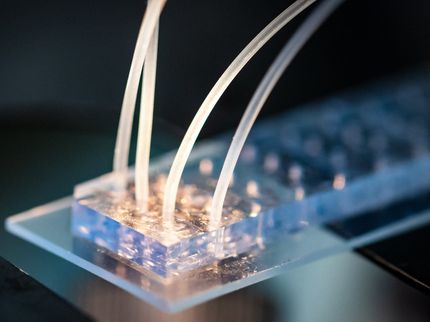'Triple-threat' approach reduces life-threatening central line infections in children with cancer
Hospitals can dramatically reduce the number of life-threatening central line infections in pediatric cancer patients by following a set of basic precautions, by encouraging families to speak up when they observe noncompliance with the protocol and by honest analysis of the root cause behind every single infection, according to a new Johns Hopkins Children's Center study. In a report in Pediatrics, the researchers say this triple-threat approach has prevented one in five infections over two years.
Previous studies from Johns Hopkins and other institutions have demonstrated that meticulous daily care of the central line can cut the number of bloodstream infections in critically ill patients, but this is the first study, the researchers say, to focus on the most vulnerable of pediatric patients - those undergoing cancer treatment and bone marrow transplants.
A central venous catheter, or central line, is a tube inserted into a major blood vessel in the neck, chest or groin as a portal for medication, fluids or blood draws. Inserted incorrectly or mishandled after insertion, the central line can become a gateway for bacteria and other germs into the patient's bloodstream, causing invasive disease and organ damage. Because nurses and doctors access the catheter several times a day -- as much as 10 to 30 times daily in oncology patients, researchers say -- proper handling of the device is critical.
"Children receiving cancer treatment are uniquely prone to invasive bloodstream infections because of their weakened immunity and because their central lines are accessed multiple times a day, with each entry posing a risk for infection," says lead investigator Michael Rinke, M.D., a pediatrician and a patient safety expert at the Johns Hopkins Children's Center.
The current study was carried out by pediatric oncology nurses, physicians and safety experts at the Johns Hopkins pediatric inpatient cancer unit. To keep bacteria and other pathogens at bay, the nurses deployed strict device-handling precautions that included -- among other things -- frequent and regular changing of the dressing covering the central line; regular changing of the tubes and caps attached to central line; cleaning of the line before and after each use; use of facial mask and gloves when handling the device; and hand-washing before and after handling the line.
Other news from the department science

Get the life science industry in your inbox
By submitting this form you agree that LUMITOS AG will send you the newsletter(s) selected above by email. Your data will not be passed on to third parties. Your data will be stored and processed in accordance with our data protection regulations. LUMITOS may contact you by email for the purpose of advertising or market and opinion surveys. You can revoke your consent at any time without giving reasons to LUMITOS AG, Ernst-Augustin-Str. 2, 12489 Berlin, Germany or by e-mail at revoke@lumitos.com with effect for the future. In addition, each email contains a link to unsubscribe from the corresponding newsletter.



















































